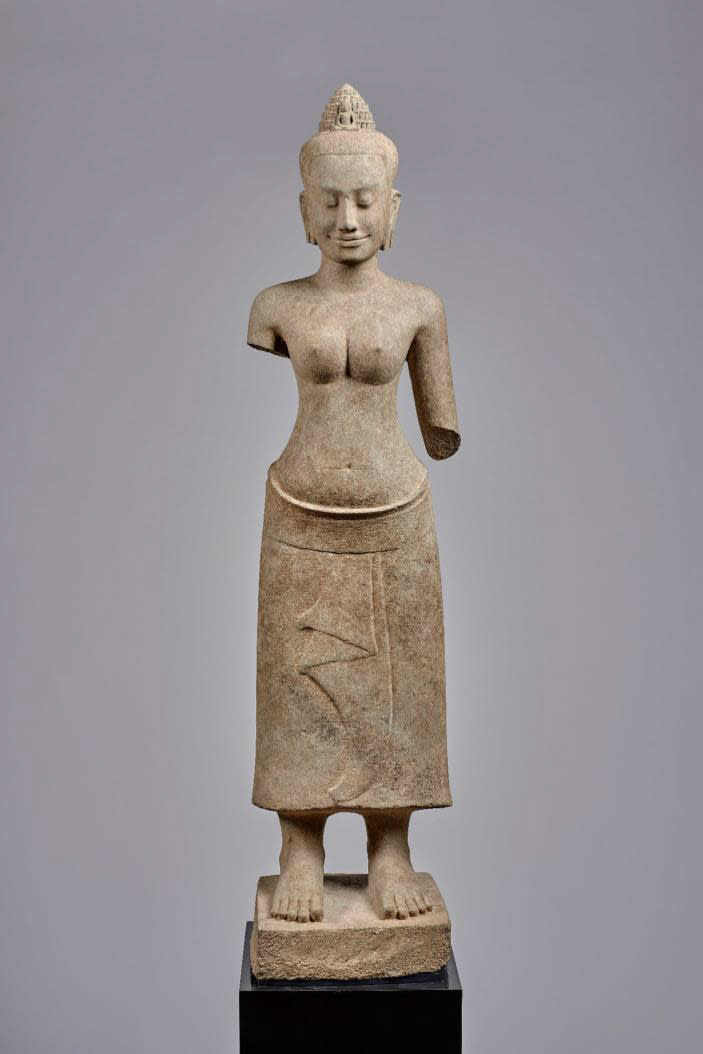Feds intervene to help Cambodia recover looted artifacts from Denver museum
Federal prosecutors in New York have filed a civil complaint to help the Cambodian government retrieve valuable artifacts that a Denver art museum bought from a renowned art collector who was later revealed to be a major trafficker in looted goods.
The case, United States of America v. a Late 12th Century Khmer Sandstone Sculpture Depicting Standing Prajnaparamita, was filed Monday. It seeks the return of four pieces the Denver Art Museum acquired from Douglas Latchford, who was one of the world's foremost experts on Khmer Empire art.

Prosecutors charged in 2019 that Latchford was more than just an expert — he was deeply involved in looting and smuggling antiquities out of Cambodia and then selling them for millions of dollars, they said. He died last year at 88 before his trial started.
"As alleged, Douglas Latchford papered over the problematic provenance of Cambodian antiquities with falsehoods, in the process successfully placing stolen goods in the permanent collection of an American museum," said Damian Williams, the U.S. attorney for Southern New York.
The museum voluntarily relinquished custody of the four pieces, which also include a seventh- to eighth-century Khmer sandstone sculpture depicting the sun god Surya.
The court filing says that Latchford duped the museum into thinking he had obtained the pieces legally and that the museum paid over $800,000 for the two sculptures. The Cambodian government identified the stolen pieces with the help of a person identified as "Looter-1," who had learned the trade from his father.
"From in or about the 1980s until the late 1990s, Looter-1 developed an expertise in the location, identification, and removal of Khmer cultural objects from various temples and other sites around Cambodia. By the 1990s, Looter-1 was leading a group of approximately 450 people working in multiple teams to loot temples and archeological sites," the court filing says.
"Looter-1 reviewed photographs of the four Defendants in Rem, and recognized them as antiquities that Looter-1 and his team had stolen from archeological and religious sites in Cambodia," it says.
The museum's communications and media manager, Andy Sinclair, said in a statement to NBC News that officials there "reached out to Cambodian officials to bring these pieces to their attention and gather additional information" after Litchford's indictment. "Since that time, the Museum has cooperated with the U.S. and Cambodian governments to secure their return," he said.
The museum told The Denver Post that the “works are still in the care of the museum until the next step of the process to transfer them.”
“Ensuring proper ownership of antiquities is an obligation the museum takes seriously, and the museum is grateful that these pieces will be returning to their rightful home,” a spokesperson told the newspaper.
The Manhattan U.S. attorney's office has handled several other high-profile antiquity forfeiture actions in recent years, including one involving a rare stolen dinosaur skull that actor Nicolas Cage had bought for $276,000, which was returned to the Mongolian government.

